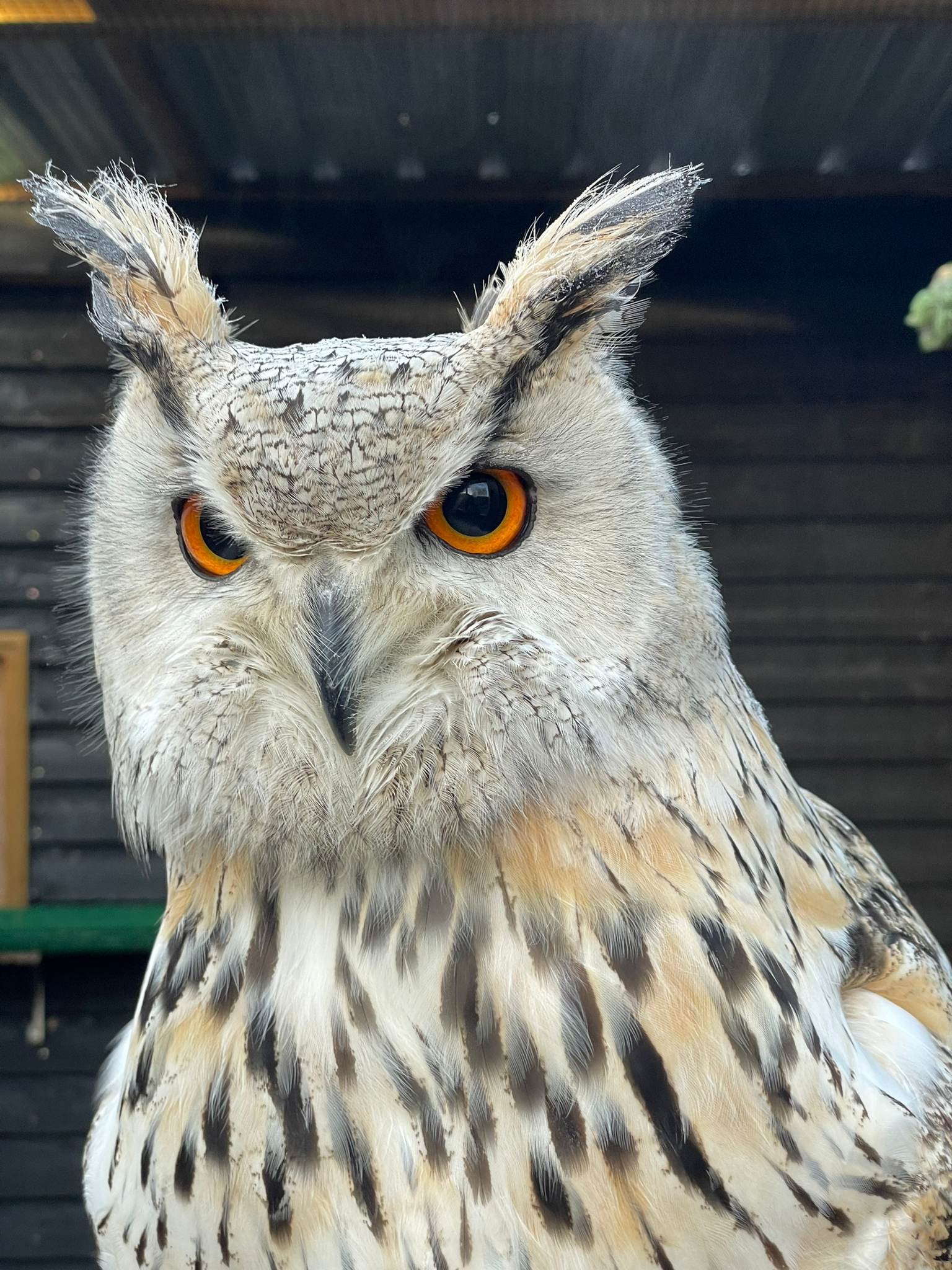With the recent cold temperatures, we’re often asked how our birds cope with the sub-zero temperatures, and what extra care they might need.
Falconer Jess took this photo of Tura, our Siberian Eagle Owl, with frosty feathers. Jess explains “frost on the feathers tells us that there is no heat loss from the body. Feathers are excellent insulation, so for birds like Tura, this cold weather is perfectly fine.”
Another special adaptation that northern birds have is feathered feet, as demonstrated by Loki, our Snowy Owl. In the wild, Snowy Owls spend most of their time on the ground, so nobody wants cold feet! The feathers are like wearing extra thick cosy socks, which mean that they are always ready to catch their prey.
For our birds who would naturally be found in warmer environments, we have moved them to aviaries that are more sheltered from northerly winds, or that catch the sun a bit better at this time of year. We also increase their food intake, so that they can put on some extra layers to protect from the freezing conditions.
While looking after our captive birds is definitely our priority, we also keep an eye open for our wild neighbours. A female Kestrel who has taken up residence locally has been seen hunting on our Flying Ground. She was very confiding and Jess was concerned that she might be struggling to catch the voles within the neighbourhood, so we’ve been leaving out some food for her to see her through the next few weeks until the weather warms up.
Falconer Jade has been using her photography skills to capture the numerous thrush species which have descended on our hedgerows to devour the berries. While Blackbirds, Mistle and Song Thrushes are present all year round, they have been joined by additional birds from Scandinavia of the same species, as well as Redwings and Fieldfares. Staff recently counted over 20 Blackbirds feeding on the berries. These birds will soon be migrating back to their home territories further north in preparation for upcoming spring and breeding season.




